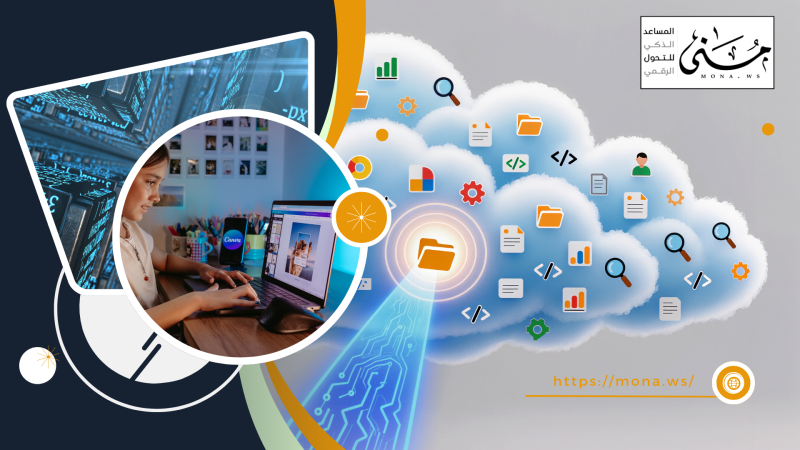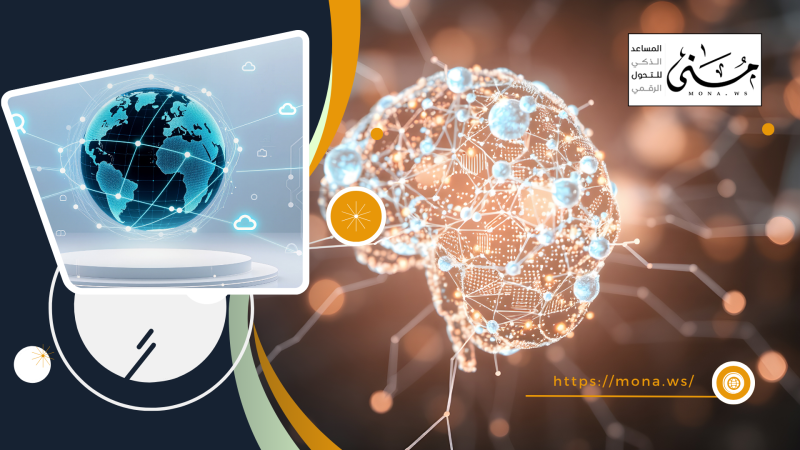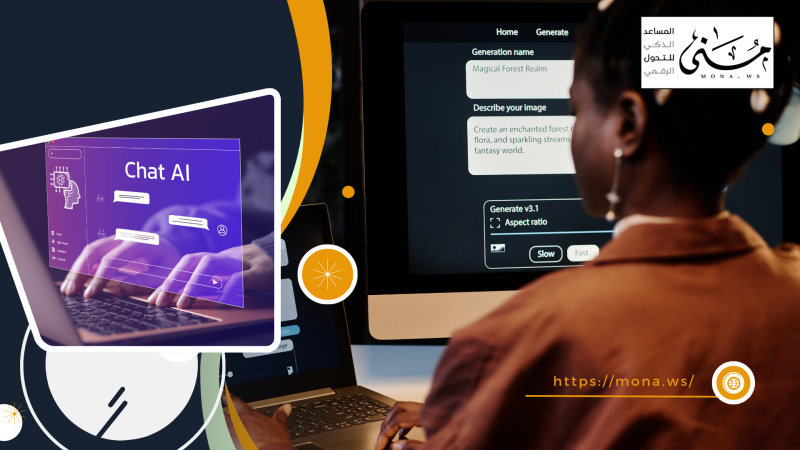Have you ever imagined board meetings being conducted paperless, without conflicting schedules, and without even requiring physical attendance?
A scenario that seemed almost fanciful a few years ago has now become a springboard for a new future of virtual meetings , driven by artificial intelligence and comprehensive digital integration .
As organizations prepare to face the challenges of post-2030, there is a need to reimagine how meetings are held, decisions are made, and documented securely and effectively. In this article, we explore how board meetings and regular meetings will transform from cumbersome, traditional procedures into intelligent, automated experiences using advanced tools like DocSuite. And other integrated meeting management solutions .
Goodbye to traditional meetings... the future starts now
With the continued acceleration of digital transformation and corporate investment in artificial intelligence and cloud communication technologies, meetings are no longer what they once were. Rather, they are becoming an integrated experience, supported by intelligent interaction, real-time control, and complete flexibility in time and place .
- Disappearing geographical boundaries: meetings without passports
Meeting attendance is no longer conditional upon being present at an organization's headquarters. Advances in virtual reality (VR) and augmented reality (AR) technologies eliminate the need for travel or physical presence. Managers can now enter virtual meeting rooms that mimic real-life events, with the ability to interact visually and audio-visually as if they were in the same room. This means faster meeting times, reduced logistical costs, and the seamless participation of experts and consultants from anywhere in the world .
- Smart Connected Meeting Rooms: Technology Inside the Meeting, Not Outside
Future meeting rooms will be interactive operational platforms, connected directly to corporate information systems. Members will be able to view real-time reports, review performance indicators, and launch presentations by voice or gesture. Tools will be available to monitor talk time and attendee interactions, facilitating dialogue and streamlining decision-making. The room is no longer just a place; it is a smart environment that interacts with participants .
- The End of Paper and Dispersed Files: Towards Smart Document Centralization
No one will need to bring or print files, as all documents will be stored digitally in systems like DocSuite , allowing instant access during the meeting. Agendas can be prepared, attachments can be uploaded in advance, and each user's permissions can be set. The platform also allows for immediate digital signatures on decisions or minutes, linking them to a documented corporate record for easy reference later without fear of data loss or mixed copies .
- Instant analysis of decisions and outcomes: Intelligence at the heart of decisions
Meetings will not only generate ideas and make decisions; intelligent systems will monitor the impact of these decisions in real time. By combining historical data and predictive analysis, alternative paths can be suggested or unforeseen impacts can be flagged. Artificial intelligence can also categorize tasks resulting from meetings, automatically distribute them to members, and link them to internal business systems to ensure automated implementation and follow-up .
Artificial Intelligence as a Smart Meeting Assistant
With the advancement of artificial intelligence technologies, its role is no longer limited to analysis or decision support, but has become an actual partner in managing and organizing meetings. From preparation to execution, it has become possible to rely on intelligent systems to perform tasks that used to require significant human time and effort, allowing participants to focus on the content and decision-making .
Automatically create agendas
Before the meeting, the intelligent system analyzes previous meeting minutes, task logs, and emails, and proposes a customized agenda. The agenda can be adapted based on emerging priorities or the level of responsibility of each member. This reduces manual preparation and ensures that important or recurring issues are not overlooked .
Summarize meetings and generate smart minutes
During the meeting, AI audio-records the interventions, converts them into searchable text, and then summarizes them into accurate minutes that take into account roles and responsibilities. Some systems can generate customized transcripts for each participant, focusing only on points relevant to their tasks. This eliminates the need to manually write minutes or review them after the meeting .
Analyze interventions and make recommendations
Artificial intelligence systems can analyze tone of voice, repetition of terms, and intersections of speech to extract qualitative insights from a meeting. Leaders can be provided with a summary of the "degree of agreement" or "level of decisiveness in decisions," or even suggestions for more effective alternative decisions based on previous data and similar scenarios .
Discover patterns and identify gaps
By analyzing meeting data over months or years, AI can detect recurring patterns, such as the postponement of the same topics or poor adherence to specific decisions. It can also monitor time gaps between decisions and their implementation, or individuals who are not actively engaged, and suggest organizational interventions to improve performance .
Voice interaction and integration with other systems
Participants can interact with the intelligent assistant during a meeting via voice commands: "Summarize the previous point," "Open the earnings report," or "Add this task to the follow-up list." AI can also be integrated with human resources, planning, and finance systems, enabling it to provide real-time information without having to navigate between different systems .
Digital boards of directors and documenting their decisions
In the post-2030 world, board meetings will no longer be merely closed, formal events. They will transform into highly organized digital entities, governed by integration and compliance, and fully supported by smart platforms. Documenting decisions, ensuring transparency, and complying with legal regulations will become instant and automated, eliminating the need for traditional paperwork or manual signatures .
Instant documentation of decisions and digital voting
With the advancement of meeting management systems like DocSuite , it has become possible to record every intervention and decision in real time and save it in a secure digital record. Board members can vote electronically, whether physically present or remotely, and the voting results are recorded in an irrevocable form. This mechanism ensures transparency and eliminates traditional paper minutes .
Official and legally approved electronic signature
The need for physical presence is no longer an obstacle to signing sensitive decisions. Modern systems provide internationally recognized encrypted digital signature methods that allow signing from anywhere in the world, with the ability to track the source and timing of the signature. This ensures the integrity of legal proceedings and preserves the official nature of decisions without delay .
Integration with electronic archiving systems
Every document issued during council meetings—whether a resolution, minutes, or report—is automatically linked to the institutional electronic archiving system. It can be retrieved later by classification, year, or subject, while maintaining a record of amendments and tracking versions. This enables the creation of a digital institutional memory that facilitates subsequent auditing and review processes .
Monitoring compliance and attendance and defining responsibilities
Digital meeting systems can accurately track attendance, whether through digital signatures, two-factor authentication (2FA) , or even facial and voice analysis. Meeting outcomes—such as tasks and recommendations—can also be linked to each member, creating a clear record of responsibilities and adherence. This feature contributes to higher levels of accountability and governance .
Strengthening corporate governance and compliance
Through this integrated digital model, board meetings become an effective means of enhancing compliance with local and international laws, such as financial disclosure regulations, transparency requirements, and data protection laws. Digital evidence and electronic fingerprints also provide strong legal evidence in disputes or investigations .
After the meeting... where smart execution begins
In traditional models, meetings typically ended with generic phrases like "We'll review points later" or "We'll mail out the tasks," but in the future work environment, driven by intelligence and instant communication, there's no room for adjournment or distraction .
The meeting doesn't end when you leave the room; it begins the moment you adjourn .
Once the meeting ends, intelligent systems automatically kick in. An immediate to-do list is generated for each participant based on what was mentioned or voted on during the discussion. These tasks are transferred directly to the organization's project management systems , where deadlines are automatically set and linked to the organization's priorities and ongoing operational plans .
At the same time, each meeting member receives a personalized message via email or work app , containing the assigned tasks, the points discussed, and direct links to open relevant files or reports. These messages are not just reminders; they are an actual implementation gateway that allows the user to interact, respond, or request support .
interactive dashboards appear . Visually tracks the implementation of items: completed tasks light up green, overdue tasks light up red, and alerts appear automatically for management if implementation is delayed or encounters obstacles .
Because smart organizations rely not only on achievement but also on continuous improvement , platforms issue periodic reports on the "meeting status," monitoring who has complied, who has fallen behind, and what has repeatedly gone unfulfilled in previous meetings .
These reports help inform more accurate management decisions and potentially redesign the meeting process itself to improve effectiveness .
The CEO or board chairman doesn't need to manually request updates. With the touch of a button, they can access a platform like DocSuite. He sees a dedicated panel that shows the extent of implementation of each item, allowing him to intervene when necessary .
Thus, meetings transform from a mere gathering of people discussing, into an integrated, dynamic system that works before, during, and after the session, leading the organization toward measurable results, rapid implementation, and effective governance .
The comprehensive integration model for smart meeting management
In a world where meetings are managed through smart systems, a unified platform is essential that brings together all elements of the process into an integrated environment. This is where DocSuite comes into play , not just as a document management system, but as a central core that manages everything related to the meeting, from preparation to documentation and follow-up, within a comprehensive corporate vision .
One platform for all stages
Availability DocSuite A unified interface enables teams to call meetings, set agendas, attach documents, and set access permissions before the session begins. There's no need to navigate multiple tools or send files via email—everything is managed from within the platform, with precise timeline tracking for each action .
Smart attendance and documentation
During the meeting, allow DocSuite Digitally register attendance, record the session (audio and/or video), and link the points raised to the agenda. Participants can add live comments or vote electronically, with everything recorded in a secure, encrypted record that can be accessed at any time. This mechanism eliminates manual recording and ensures accurate documentation .
Integrated electronic signature
When decisions require a formal signature, documents can be issued and digitally signed within the system using legally approved protocols. This signature is stored in the decision archive, along with the timeline and authentication source, ensuring reliability and compliance in the event of audits or disputes .
Follow-up and implementation within the same environment
Unlike separate tools, it provides DocSuite The ability to link meeting results to internal business systems , whether related to human resources, projects, contracts, or financial operations. This integration allows each meeting item to be transformed into an actionable task within the platform, eliminating the need to re-enter data or lose context .
Intelligent analytics and corporate memory
Thanks to advanced analysis techniques, it offers: DocSuite Intelligent reports on meeting effectiveness: How many decisions were implemented? Who are the most committed members? What are the recurring topics?
These reports are based on a cumulative digital record that creates an institutional memory that contributes to improved planning and decision-making in the future and tangibly supports the digital transformation strategy .
Finally : DocSuite Not just a tool…it's an integrated digital work environment In the post-2030 era, it is not enough to hold a meeting successfully; we must ensure that the meeting leads to a real, measurable, and actionable impact. Here, DocSuite It is more than just a meeting management platform , it is a strategic digital partner that transforms every administrative interaction into corporate value supported by technology, compliance, and efficiency .





Comments
Add New Comment